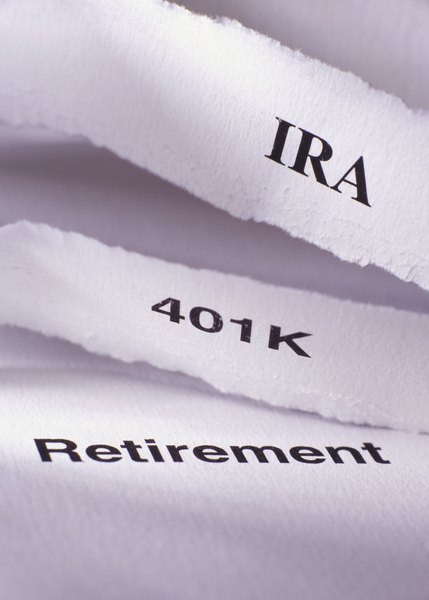How Is a 401(a) Different From a 401(k)?
401(k) and 401(a) plans are similar, but have some major differences.
Photodisc/Photodisc/Getty Images
While 401(a) plans have many similarities with 401(k) programs, there is one overriding difference. Private employers set up 401(k) plans, while government organizations use 401(a) programs. Particularly popular with public school systems, 401(a) retirement savings plans cover the majority of teachers in the United States. Another difference is the menu of options offered employees for the amount of compensation contributions and types of investment choices. Withdrawal regulations are often similar, if not identical.
401(a) Vs. 401(k)
Other significant features unique to 401(a) retirement plans are employee participation and contribution maximums. Instead of allowing participation by all employees, with identical contribution limits, as with 401(k) plans, 401(a) programs are usually customized for key employees in educational or governmental organizations. Other not-for-profit organizations also use 401(a) retirement plans as incentives to encourage key employees to stay with the organization long term. Employees can be required to contribute a percentage of their compensation mandated by the employer.
Employees often have more options with 401(k) plans than they do with 401(a) accounts. With 401(k) programs, employees choose the amount of their income they want to defer. Employers then decide on the level of employee contributions they want to match. For example, if employees are permitted to contribute up to 6 percent of their gross income, an employer may elect to match up to 3 percent of those contributions with its own funds.
Employees in 401(k) plans choose from a menu of investment options, usually from from a variety of mutual funds, to decide how they want their funds invested. Conversely, a 401(a) plan gives employers more control over their employees' investment choices, as employers can offer options similar to those of a 401(k) or limit employee options to only those investment plans they support. Government employers offering 401(a) plans, such as with public teacher groups, often prefer to restrict investment options to only the most safe and secure options.
IRS withdrawal rules from either 401(k) or 401(a) plans are almost identical. You can withdraw funds after you retire or when you leave your job. However, if you are under age 59 1/2, you may be subject to an IRS penalty of 10 percent, in addition to withdrawals being subject to income tax at the level of your current tax bracket.
Money that you or an employer put into a 401(a) or 401(k) is exempt from taxes in that year. You pay tax when you withdraw the money in retirement.
Rollovers and Taxes
You can roll over both 401(k) and 401(a) plans into similar accounts with new employers or into IRAs.
However, if you directly receive your funds before selecting your rollover account, your employer must withhold 20 percent of your balance as federal withholding taxes. You'll have to make up that money until you get your tax refund, or else be treated as taking a withdrawal from your plan.
If you don't put the money into a new account within 60 days, you'll be treated as taking an early withdrawal and taxed accordingly, including the 10 percent withdrawal penalty. It's generally best to have your retirement plan provider send the funds directly to the new plan when doing a 401(k) or 401(a) rollover.
IRAs often are more flexible about investment opportunities than employer plans, so it can be worth rolling over your funds when you take a new job.
2018 Tax Law Changes
The tax laws around retirement plans aren't changing much for 2018. But since tax rates are declining overall, you may see less of a change in your total tax bill based on contributions to retirement accounts, even as your bill goes down.
2017 Tax Law Situation
Tax rates are higher in 2017 than in 2018, meaning many taxpayers will see more dramatic savings in 2017 from retirement plan contributions.

